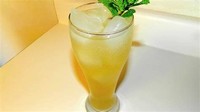Facts about Ginger

Green ginger wine is a ginger flavored wine produced in the United Kingdom, traditionally sold in a green glass bottle.

Zingiberaceae, the "ginger family," is a family of flowering plants consisting of aromatic perennial plants with creeping horizontal or tuberous rhizomes.

Fresh, unpeeled ginger can be refrigerated up to three weeks if tightly wrapped and up to six months if frozen (Herbst 2001).

The characteristic odor and flavor of ginger root is caused by a mixture of zingerone, shoagoles, and gingerols, volatile oils that compose about one to three percent of the weight of fresh ginger.

Fresh ginger can be successfully substituted for ground ginger and should be done at a ratio of 6 parts fresh for 1 part ground.

Young ginger rhizomes, also called spring ginger, are juicy and fleshy with a very mild taste, and have a thin skin that does not have to be peeled.

In Burma, ginger is used in a salad dish called gyin-tho, which consists of shredded ginger preserved in oil, and a variety of nuts and seeds.

Zingerone is also produced from gingerols during this process, and it is less pungent and has a spicy-sweet aroma (McGee 2004).

There have indeed been a number of research studies that have indicated that ginger is useful in aiding digestion (Crawford and Odle 2005).

The medical form of ginger historically was called "Jamaica ginger"; it was classified as a stimulant and carminative, and used frequently for dyspepsia and colic.

Herbst (2001) reports that most ginger in the United States comes from Jamaica, followed by India, Africa, and China.

According to the Food And Agricultural Organization of United Nations, in 2005, China lead the world in ginger production with a global share of almost 25 percent followed by India, Nepal, and Indonesia.

Ginger contains up to 3 percent of an essential oil that causes the fragrance of the spice.

Ginger compounds are active against a form of diarrhea, which is a leading cause of infant death in developing countries.

Ginger is contraindicated in people suffering from gallstones as the herb promotes the release of bile from the gallbladder (Al-Achi; Mayo 2006).
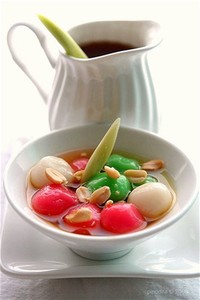
Indonesia has a famous beverage that called Wedang Jahe, which is made from ginger and palm sugar; Indonesians also use ground ginger root, called jahe or djahe, as a frequent ingredient in local recipes.

The most well-known member of Zingiber is Z. officinale, also known as garden ginger.

Mature ginger roots are fibrous and nearly dry, with a tough skin that must be carefully removed to preserve the delicate flesh just under the skin (Herbst 2001).
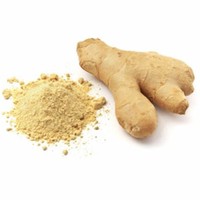
Ground and fresh ginger taste quite different and ground ginger is a poor substitute for fresh ginger.

Ginger is popular as a spice for flavoring food, while the oil of ginger may be used for perfume and medicine.

Ginger also is used as an ornamental plant for landscaping.

Ginger is the common name for the monocotyledonous perennial plant Zingiber officinale, an erect plant in the Zingiberaceae family that is widely cultivated for its edible, underground rhizome (horizontal stem).

Ginger has also been historically used to treat inflammation, which several scientific studies support, though one arthritis trial showed ginger to be no better than a placebo or ibuprofen (UMMC 2006).
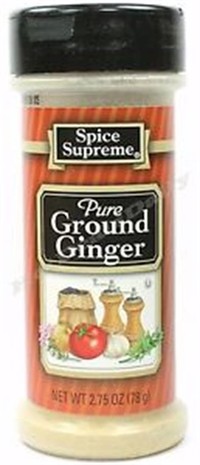
Fresh ginger is one of the main spices used for making pulse and lentil curries and other vegetable preparations.

In China, a drink made with sliced ginger cooked in sweetened water or a cola is used as a folk medicine for common cold (Jakes 2007).

The pickle gains a mature flavor when the juices cook the ginger over the first 24 hours.

Ginger also may decrease joint pain from arthritis, though studies on this have been inconsistent.

Human creativity is reflected in the human discovery of the value of ginger and in its being utilized in so many different products.

The pungent taste of ginger is due to nonvolatile phenylpropanoid-derived compounds, particularly gingerols and shogaols.

Ginger is one of the world's more well-known and useful plants, being used for centuries as a spice for flavoring food and as a medicinal plant.

The genus Zingiber contains the true gingers, many of which have medicinal and culinary value in many parts of the world.

Ginger is composed of about 50 percent starch, 9 percent protein, 6-8 percent lipids (glycerides, fatty acids, phosphatidic acid, lecithins, etc.

Ginger is thought to lower cholesterol by impairing cholesterol absorption, assist conversion of cholesterol to bile acids, and then increasing bile elimination; research showed rabbits had a smaller amount of atherosclerosis (Crawford and Odle 2005).

Powdered dry ginger root (ginger powder) is typically used to add spiciness to gingerbread and other recipes.
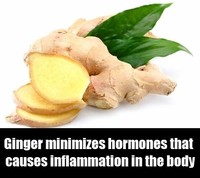
The former method, applied generally to the older and poorer roots, produces Black Ginger; the latter, gives White Ginger.

Ginger ale and ginger beer both have been recommended as "stomach settlers" for generations in countries where the beverages are made or sold.
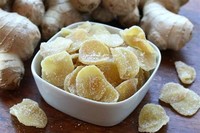
Candied or crystallized ginger is prepared by cooking it in a sugar syrup and coating with sugar.

Ginger also can interfere with the absorption of tetracycline, digoxin, phenothiazines, and sulfa drugs (Crawford and Odle 2005).

Unchewed fresh ginger may result in intestinal blockage, and individuals who have had ulcers, inflammatory bowel disease or blocked intestines may react badly to large quantities of fresh ginger (Mayo 2006).

The term also is used to refer to this pungent, aromatic rhizome, which is commonly dried and prepared as a popular spice, and is sometimes referred to as gingerroot.

Crawford and Odle (2005) report that ginger historically was used to aid digestion, with even ancient Greeks eating it wrapped in bread as an after dinner digestive.

The juice from old ginger roots is extremely potent and is often used as a spice in Chinese cuisine to flavor dishes such as seafood or mutton.

Ginger has been found effective by multiple studies for treating nausea caused by seasickness, morning sickness, and chemotherapy (Ernst and Pittler 2000), though ginger was not found superior over a placebo for post-operative nausea.

Research on rats suggests that ginger may be useful for treating diabetes (Al-Amin et al.

Each ginger species has a different culinary usage; for example, myoga is valued for the stem and flowers.

A dicotyledonous native species of eastern North America, Asarum canadense, is also known as "wild ginger," and its root has similar aromatic properties, but it is not related to true ginger.
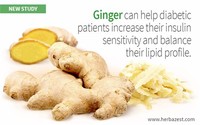
There also are clinical studies that ginger can help suppress nausea and vomiting associated with pregnancy, but it is not recommended because of the possibility of miscarriage.

The natural color of the "white" scraped ginger is a pale buff—it is often whitened by bleaching or liming, but generally at the expense of some of its real value.

which is known as blue ginger or Thai ginger, and is used for similar purposes as Zingiber officinale.
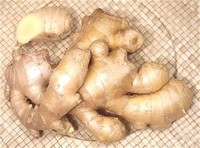
In Arabic, ginger is called Zanjabil and in some parts of the Middle East ginger powder is used as a spice for coffee.

Tea brewed from ginger is a folk remedy for colds, and ginger water was commonly used to avoid heat cramps in the US.

Ginger is on the United States Food and Drug Administration's "generally recognized as safe" list.

Ginger may have blood thinning and cholesterol lowering properties that may make it useful for treating heart disease (UMMC 2006).
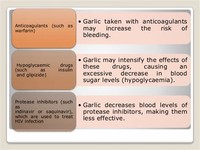
Ginger does interact with some medications, including warfarin, which is a blood thinner (Crawford and Odle 2005).

Fresh ginger comes in the two forms of young ginger or mature ginger (Herbst 2001).

There also are some other plants that utilize the term ginger as part of their common name.
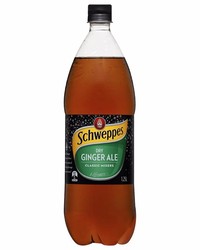
Ginger ale is an example of a currently popular beverage that includes ginger and also utilizes ginger's reputation as a digestive aid, a property that was utilized even in ancient Greece (Crawford and Odle 2005).
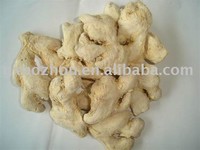
In China, sliced or whole ginger root is often paired with savory dishes, such as fish.

Allergic reactions to ginger generally result in a rash and though generally recognized as safe, ginger can cause heartburn, bloating, gas, belching, and nausea, particularly if taken in powdered form.

Historically, ginger has been used for centuries for medicinal purposes, often as a digestive aid, but also for other ailments.

Ginger produces clusters of white and pink flower buds that bloom into yellow flowers.
